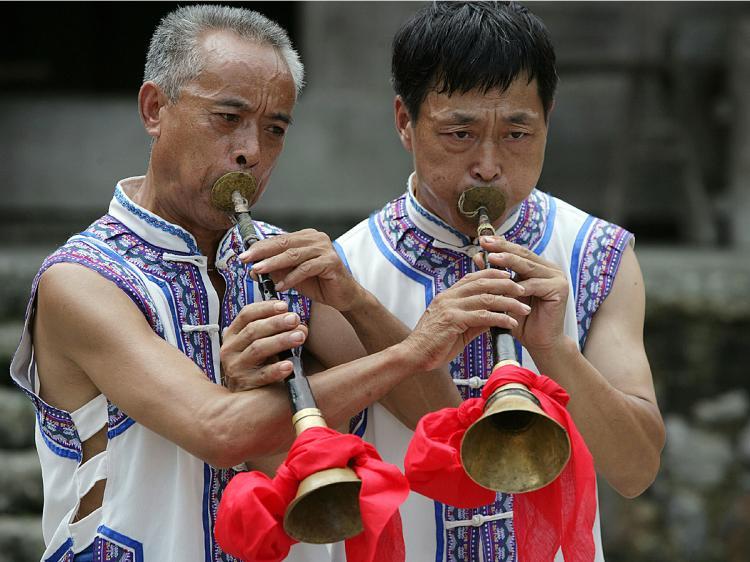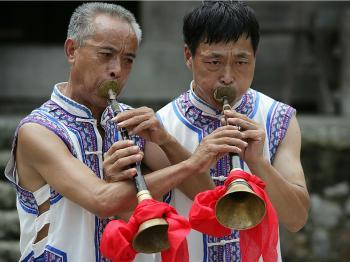
The Chinese oboe, the traditional suona is a woodwind instrument with many faces and a long history. The double-reed, cone-shaped instrument is carved from wood and features seven finger holes on the front and one on the back side. The wooden body is covered by a copper tube and a brass bell is fixed at the lower end.
The suona can produce a wide variety of tonal qualities. It can make an enormously loud and penetrative tone and so is perfectly suitable to illustrate huge emotions like joy or grief and therefore very popular for weddings, funeral processions, and military purposes. But it can be also very soft and sentimental, depending on the blowing technique. It often serves as an accompanying instrument for regional Chinese operas.
The three parts of the suona, its pipe, whistle, and horn can be taken apart and played separately, which creates even more possibilities for the player. Chirpy, joyful, and shrill (as only the suona can sound) make it predestined to imitate birds singing. The most popular solo piece for the suona is the Homage to the Phoenix (Bai Niao Chao Feng) where hundreds of different birds raise their voices to praise the mystical bird king.
In the 20th century the suona’s tone range was widened and a lower and a higher suona was created. The bass suonas can be longer than a yard, and the smallest ones are only several inches long.




